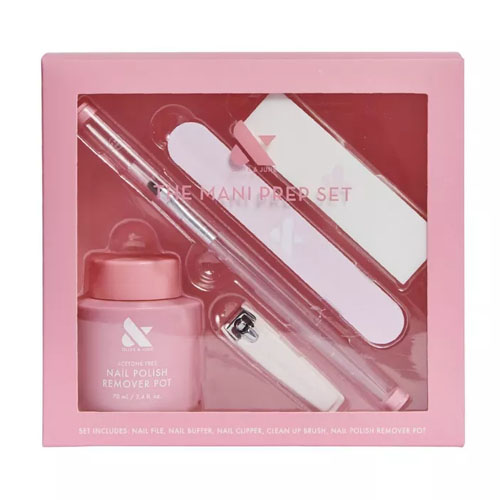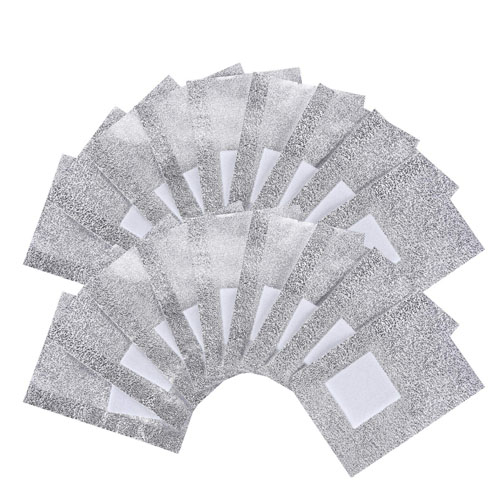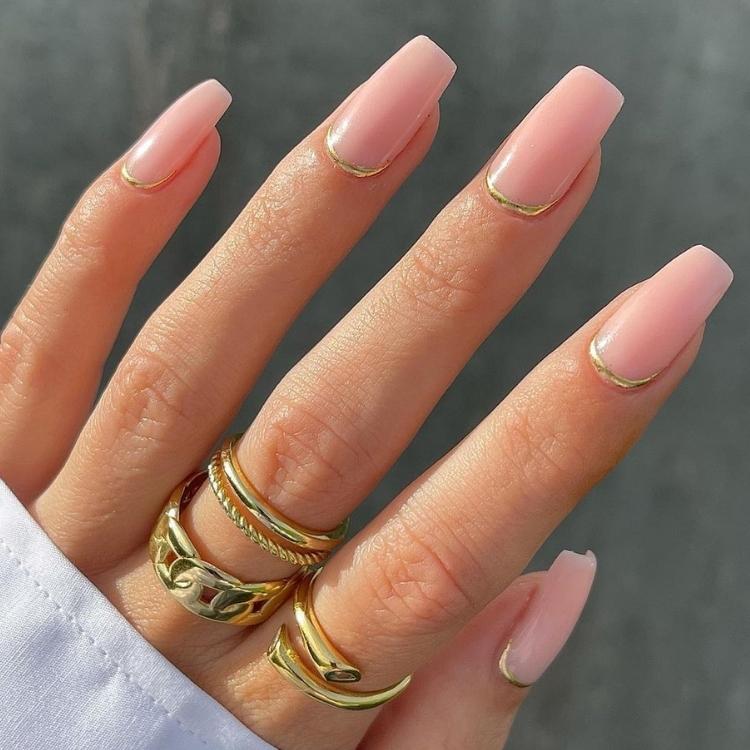Many people find the prospect of giving themselves a manicure at home to be daunting enough, but attempting to remove acrylic nails without the assistance of a nail tech can be especially intimidating. We’ve all heard (or maybe even experienced) the horror stories of painfully ripped off acrylics and torn up nail beds, and who wants to experience all that? No one. But if you don’t have time to make it to a salon and need those acrylic nails gone ASAP, safely removing them at home is entirely possible. It’s just all about knowing which methods are actually effective and not harmful. We cannot have crusty, broken nails for summer time, ladies.
turns out, you don't have to spend all of your free time cleaning
The internet is flooded with different DIY approaches to removing your acrylics yourself, from hot water to dental floss to even sliding a credit card underneath them (definitely stay away from that one). So, we’re here to tell you the cold hard truth: you need to use acetone to remove your acrylic nails. Don’t let anyone tell you otherwise! It’s the only way to remove them that ensures there is no excess damage to your natural nails. Acetone also does the most thorough job and keeps the process totally pain-free. So without further ado, here’s how to actually remove acrylic nails at home in a way your natural nails will thank you for later:
How To Remove Acrylic Nails

Source: Shutterstock
Trim Down & Buff
To start the removal process, you’re going to want to cut all of the excess length off your acrylics and buff off all of the polish (devastating moment, but it has to be done). But, this will make removing the nails much easier, allowing the acetone to soak in (which we’ll get to in a moment).
What You Will Need:
Instructions:
Step 1: Using a strong pair of nail clippers, trim your acrylic nails as short as possible without cutting your real nails and damaging your nail beds.
Step 2: If you have regular polish on top of your acrylics, you can simply remove it with some acetone nail polish remover (most nail polish removers have acetone in them and work more effectively, but acetone-free remover can also work). With gel polish, use the coarse grit side of your nail file to remove the shiny top coat.
Step 3: Continue to gently file your nail until the shine of the nail is completely gone. Be very careful to not over-buff the acrylic, as it can end up weakening and/or damaging your natural nails. A good rule of thumb is to leave a thin layer of acrylic covering the entire natural nail, and the acetone soak will take care of the rest.

Source: Shutterstock
Acetone Method #1: Foiling
Using acetone at home is a bit intimidating, as it’s an intense chemical with an even more intense scent that can leave your nails feeling frail and dried out. But as we talked about before, many methods that are labeled as “gentler options” are not safe ways to remove acrylics and can be both painful and ineffective. As long as you approach the process carefully, using acetone is totally safe and is definitely our best bet all around.
There are two different methods to removing your acrylic nails with acetone, the first being the foil method. This is the approach used at a nail salon, and allows for minimal skin-to-acetone contact. While it’s a bit intricate, a little bit of time and patience with these steps will have your acrylics safely off in no time.
What You Will Need:
- Pure acetone
- Cotton balls
- Tin foil
- Hot towel
- Nail file
- Cuticle pusher
Instructions:
Step 1: Soak a cotton ball in acetone and place it on top of your acrylic-covered nail bed. Once it’s covering the entire area, wrap it tightly in a small piece of tin foil. Doing this with your non-dominant hand can be bit of a hassle, so take it slowly (or, have someone there to help you out to really make the process easier)! If you are doing this by yourself, we suggest doing one hand at a time for minimal room for error.
Step 2: Once your nails are wrapped up, give each of them a squeeze to see if a bit of acetone drips out when you do so—this is a good thing! This is how you know you have enough acetone on the cotton ball. Now, let each nail soak for a minimum of 10 minutes. If the acrylic hasn’t broken down properly in that amount of time, you can let it soak for up to 20 minutes. To speed up the process, you can place a hot towel on top of your foil wrapped nails, as warm acetone works much faster.
Step 3: Remove the foil and gently buff off any remaining acrylic, and use a cuticle pusher to gently scrape off any excess that turned to a gooey consistency. If leftover pieces don’t come off easily with a nail file, try wrapping theme again for a couple more minutes. Patience is key!

Source: Shutterstock
Acetone Method #2: Bowl Soaking
This other removal method is less labor intensive, but it does expose your skin to a higher level of acetone. This isn’t detrimental by any means—just be sure to follow proper after-care steps and you’ll be good to go.
What You Will Need:
- Pure acetone
- A bowl
- Warm water
- Nail file
- Cuticle pusher
Instructions:
Step 1: Take your bottle of acetone and run it under warm water. This step isn’t 100% necessary, but as we already mentioned, using warm acetone speeds up the removal process.
Step 2: Pour your acetone into a bowl and dip your hand in to completely submerge all of your nails, and let them soak for about 30 minutes. As they’re soaking, use can your thumb to gently rub your other nails to help the acrylic loosen up.
Step 3: You’ll notice that gooey consistency the acrylic starts to melt into. Take your cuticle pusher and gently scrape it off the nail bed. Once the majority of it is gone and you’re done soaking, pat your nails dry and use your nail file to remove any small pieces of excess acrylic.

Source: Olive & June
Hydrate Your Nails
Once the removal process is done, your nails will feel very dried out regardless of which method you used. But, there’s no need to worry. You can get them looking and feeling good as new with the right moisturizing and hydrating products:
What You Will Need:
- Warm water
- Gentle soap
- Cuticle oil
- Nail strengthening treatment (if needed)
Step 1: Immediately after removing your acrylics, wash your hands with warm water and a gentle soap to make sure all of the excess acetone chemicals are off of your skin.
Step 2: Apply a cuticle oil all around your nails beds to help moisturize the area.
Step 3: If your nails feel particularly weak or damaged, opt for a nail strengthening treatment and apply it to your nails a couple of times per week. It’s also a good idea to stick to gel nails or press-on nails until they feel strong enough to give acrylics another go.



 "
"








